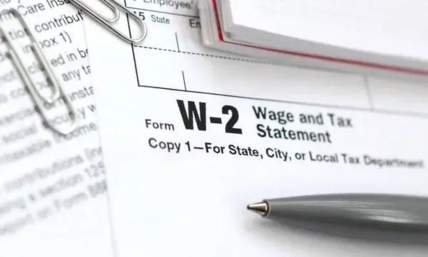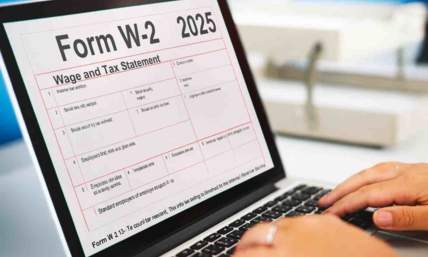The Formula For Calculating EBITDA - What to Know
EBITDA or Earnings Before Interest, Tax, Depreciation and Amortisation is a key metric for any thriving business. It allows you to not only keep track of how well your business is performing but gives you the brilliant capacity to compare your operations performance against other companies competing in the same industry as you! In this way, the EBITDA is an essential figure.
But calculating your EBITDA might seem like a complicated task if you’re not sure where to start, so get your calculator and financial documents out and we’ll show you, step by step, exactly how to calculate this figure in no time at all!
Also read: What Qualifies As Proof Of Income?

What is EBITDA?
Often used by business owners and investors to compare similar businesses, EBITDA stands for Earnings Before Interest, Tax, Depreciation and Amortisation. In order to analyse their earnings without the hassle of taking variables like taxes or interest into consideration. Often company’s will use this to measure their operational performance and look for any weaknesses in the line. By doing this, company’s can compare the results of their operational activities to other competing companies in the same industry.
In order to calculate your business’s EBITDA, you will need to look over a recent income statement for the specific time period that you want to analyse. For this you may also require a cash flow statement for the same time period in order to find depreciation and amortisation, also known as D&A.
By looking over your income statement or your profit and loss statement, you will be able to locate your operating profit. This operating profit will show the cost of your goods and operating expenses. Now unlike the classic net income or ‘bottom line’ of a profit and loss statement, it will not take into account tax or interest expenses. It will, however, take into account depreciation and amortisation, so we’ll need to add these back in to calculate the EBITDA.
Next, look at your cash flow statement to find the depreciation and amortisation amounts and add those two values into an EBITDA calculator.
The final figure left will be your company’s EBITDA. In order for this to be a useful tool for your company, you will need to regularly calculate this figure and monitor and track any changes. It will also be extremely useful to compare your own EBITDA to those of other companies in your industry to see how your operations measure up against them.
Also read: Mandatory Deductions From Your Paycheck
Why Is EBITDA Used?
EBITDA is a metric that is commonly used by both investors and business owners to compare similar businesses in their industry. They might also use this figure to keep track of how well their business is operating in general.
Many factors, such as location or debt structuring, can have a massive impact on a company’s bottom line. Tax rates may be lower or higher depending on which state a company operates in, for example, making it appear that two identical companies, operating in different states are not as profitable as one and other. By using EBITDA, you eliminate these certain variables (taxes, interest, depreciation and amortisation) and this allows you to gain a more accurate picture of how your company compares to another. This is usually why private equity investors and other groups pay such close attention to this particular metric, not to mention companies who are predicting a sale in their future. This figure allows them to quickly analyse and compare the company’s operating performance and evaluate a company much faster.
However, it is important to remember that EBITDA is a non GAAP metric, this means that it is unfortunately not recognised by generally accepted accounting principles or by IFRS (International Financial Reporting Standards). The main reason for this exclusion is the simple fact that EBITDA is a metric that, when used alone, does not represent a company’s full operational performance and can be manipulated in certain ways to paint a better picture of how a company performs.
Like most financial metrics, EBITDA is best used in tandem with other figures, to give a more balanced oversight of how well a company is doing.
Also read: How to Review Your Paychecks Before Filing Income Taxes

The EBITDA Formula
In order to calculate EBITDA, there are two main methods that you can use. To get started, you will simply need your financial statements, specifically your income statement and cash flow statements for the period you want to review. Many Companies may choose to calculate EBITDA monthly or quarterly to review overall performance, especially if anticipating a new buyer.
Method 1
The formula for the first method is as follows;
EBITDA = Net Income + Interest + Taxes + Depreciation + Amortisation
For this method you will need to start at the bottom line of the income statement, or your net income.This is calculated by subtracting all expenses from total revenue. This will include everything from cost of goods sold to interest and tax payments. So, to then calculate EBITDA, you must then add back in the interest and tax line amounts. You will also need to add the depreciation and amortisation expense, which can be found on your cash flow statements.
Also read: A Full Guide on How to Calculate Income Tax On A Pay Check
Method 2
The formula for Method two is as show below;
EBITDA = Operating Profit + Depreciation + Amortisation
With this method you will need to start in the middle of your tax income statement with your operating profit, otherwise known as operating income. Operating income only shows total revenue and not COGS or operating expenses. This means that tax and interest expenses are already excluded. So we simply need to add depreciation and amortisation.
It is important to note that the two formulas will take you to the same end figure but they do so by starting at different points of your income statement, so use whichever you feel more comfortable with.
The method you use will rely only on your own personal preference. Of course, if you would rather speed things up a bit, you can just enter the figures from your financial statements into an EBITDA calculator online, instead of doing it by hand.
Net Income
Net income can always be found right at the bottom line of your income statement. It is, simply put, your profit. It will show what is left after all expenses have been deducted from your total revenue, including the cost of goods, operating expenses, non operating expenses, taxes, interest and all other expenses. It can sometimes also be known as ‘net profit’.
Interest
How a company raises capital or the interest payments involved can vary widely between different businesses and interest is just how a company finances its own activities. This means it is often taken out of consideration as how a company chooses to structure its finance and activities will make comparing business difficult.
Taxes
Every region or jurisdiction will have its own tax requirements, this means where a company is located will have a huge impact on how much tax they pay. This means that tax payments can vary widely from company to company, even more so than interest payments. Companies will have little say or control in how much tax they have to pay. Since tax payments are not uniform, this figure is also taken out of consideration.

Depreciation and Amortisation
This figure refers simply to any value that depreciates or loses value over time. This means tangible fixed assets, like equipment, vehicles or warehouses. For amortisation it means intangible assets like patents.
But in both cases the non cash expenses show a deteriorating value of these assets. In the case of a vehicle, for example, a business owner would probably expect it to be on the road for five years. So every month until the end of its useful life, the absolute resale value on that vehicle will go down. The same goes for intangible assets. While a patent doesn’t deteriorate before our eyes, it will lose value as its expiration date nears.
Calculating depreciation expenses and amortisation expenses is highly subjective. Therefore, if business owners purchase a piece of equipment, they will need to decide on both its useful life and salvage value they can expect once the piece of equipment has reached the end of its life. Because they are so incredibly subjective, both these figures are removed from consideration when calculating EBITDA.
Also read: A Full Breakdown of W2 And 1099 Filing Specifications
EBIT VS EBITDA
By having interest, tax, depreciation, and amortisation expenses rolled into net income, business owners and private investors are able to gather a company’s metrics to evaluate the company’s performance and overall worth. However, for companies with many fixed assets, EBITDA may not be the best course of action and there are alternative metrics that can be employed.
Another very similar and very popular metric is EBIT, or Earnings Before Interest and Taxes. The main differences between EBITDA and EBIT is in the way they deal with depreciation and amortisation.
EBITDA completely disregards D&A as it is too widely variable among different companies but EBIT factors those figures back in! The best use of EBIT is to give a more reliable and accurate understanding of how a company with a large amount of fixed assets operates.
Paystubs are great for highlighting what tax you have paid and how much. Our paystub creator creates excellent high quality pay stubs in an instant.















